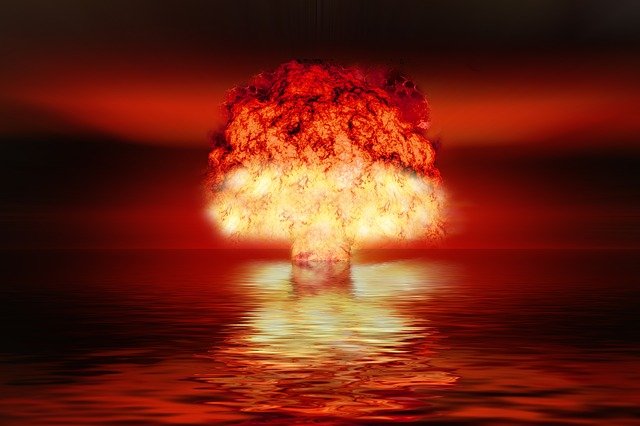Since Russia first invaded Ukraine nearly three weeks ago, the threat of nuclear weapon use has risen. The bombs get their energy from either splitting atoms or joining the tiny particles inside the atoms together. That's also why a nuclear bomb is sometimes called an atomic bomb.
Nuclear weapons release huge amounts of radiation - which can cause radiation sickness - so their actual impact lasts longer than the blast. But they've only ever been used twice in history - against Japan in 1945 during World War Two where they caused huge devastation and enormous loss of life.
The radiation from the bomb dropped on the city of Hiroshima lasted several months and killed an estimated 80,000 people. And the bomb dropped on Nagasaki killed more than 70,000 people. They haven't been detonated in war since then. Nine countries currently have nuclear weapons: the US, UK, Russia, France, China, India, Pakistan, Israel and North Korea.
At the dawn of the nuclear age, the United States hoped to maintain a monopoly on its new weapon, but the secrets and the technology for building the atomic bomb soon spread. The United States conducted its first nuclear test explosion in July 1945 and dropped two atomic bombs on the cities of Hiroshima and Nagasaki, Japan, in August 1945. Just four years later, the Soviet Union conducted its first nuclear test explosion. The United Kingdom (1952), France (1960), and China (1964) followed. Seeking to prevent the nuclear weapon ranks from expanding further, the United States and other like-minded countries negotiated the nuclear Nonproliferation Treaty (NPT) in 1968 and the Comprehensive Nuclear Test Ban Treaty (CTBT) in 1996.
India, Israel, and Pakistan never signed the NPT and possess nuclear arsenals. Iraq initiated a secret nuclear program under Saddam Hussein before the 1991 Persian Gulf War. North Korea announced its withdrawal from the NPT in January 2003 and has successfully tested advanced nuclear devices since that time. Iran and Libya have pursued secret nuclear activities in violation of the treaty’s terms, and Syria is suspected of having done the same. Still, nuclear nonproliferation successes outnumber failures, and dire decades-old forecasts that the world would soon be home to dozens of nuclear-armed have not come to pass.
At the time the NPT was concluded, the nuclear stockpiles of both the United States and the Soviet Union/Russia numbered in the tens of thousands. Beginning in the 1970s, U.S. and Soviet/Russian leaders negotiated a series of bilateral arms control agreements and initiatives that limited, and later helped to reduce, the size of their nuclear arsenals.
Today, the United States deploys 1,357 and Russia deploys 1,456 strategic warheads on several hundred bombers and missiles, and are modernizing their nuclear delivery systems. Warheads are counted using the provisions of the New START agreement, which was extended for 5 years in January 2021.
Source: The Arms Control Association, BBC news
https://www.scientificamerican.com/article/how-many-nuclear-weapons-exist-and-who-has-them/
https://www.un.org/disarmament/wmd/nuclear/
https://www.armscontrol.org/factsheets/Nuclearweaponswhohaswhat
https://www.bbc.com/news/newsbeat-51091897
https://fas.org/issues/nuclear-weapons/status-world-nuclear-forces/
